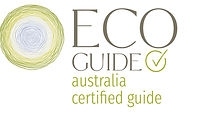
Camel Treks Australia
Outback South Australia
Off The famous Birdsville Track


WARNING: Dieri, Arabunna, Wangkangurru, Yandruwandha, Yawarrawarrka, Kuyani, and Adnyamathanha, Aboriginal people are cautioned this page may contain an image of deceased persons.
Clayton Station and the Tirari Desert, as well as Kati Thanda-Lake Eyre accessed on and via Clayton Station has served as the base camp for Camel Treks Australia's trekking operations from 2017 to 2019, 2023, 2024 and now for the April to October 2025-26 seasons.
Located on the southern end of the renowned Birdsville Track in Outback South Australia, it is a well-known pastoral property owned by the pioneering fifth-generation family, Shane Oldfield and Debbie Oldfield. The Oldfield family is highly respected and synonymous with the Birdsville Track, which is situated in one of the driest pastoral regions in Australia. The track is bordered by Sturt's Stony Desert, the Simpson Desert, the Tirari Desert, and the Strzelecki Desert. Shane and Debbie are invited and welcome at any and every campfire meal and we hope guests might be lucky enough to meet this resilient and humble couple.
Clayton Station's waters are from the Great Artesian Basin, allowing us to observe the diverse birdlife that is attracted to the surrounding wetlands. The Great Artesian Basin is recognised as one of the world's largest underground freshwater resources and the largest groundwater basin in Australia.
Clayton Station also grants Camel Treks Australia access to the largest salt lake in Australia, Lake Eyre, also known as Kati Thanda-Lake. The lake has a catchment area spanning three states and the Northern Territory. The northern lake itself is massive, covering an area of 144 kilometres in length and 77 kilometres in width. It sits 15.2 meters below sea level, making it the lowest point in Australia. The southern lake measures 64 kilometers in length and 24 kilometres in width. On average, the lake experiences flooding once every eight years. However, it has only reached its capacity three times in the past 160 years.
The extended treks offered by Camel Treks Australia aim to visit Kati Thanda-Lake, where guests can experience a profound sense of isolation while standing on the dry lake edge, surrounded by an endless expanse. Yet, with heavy rainfall and favourable conditions, the lake undergoes a remarkable transformation. Waterbirds, including pelicans, silver gulls, red-necked avocets, banded stilts, and gull-billed terns, descend upon the lake in the thousands. It becomes a breeding site and thrives with species that are adapted to saline environments. Beyond the lake, the park features striking red sand dunes and mesas, rising from salty clay pans and stone-strewn tablelands. (Information sourced: National Parks and Wildlife Service of South Australia).




The Tirari Desert, along with the Strzelecki and Sturt Stony Deserts, comprises a vast expanse of desert terrain in northeastern South Australia. Situated on the eastern edge of Lake Eyre, the Tirari Desert encompasses a portion of the Kati Thanda – Lake Eyre National Park.
The vegetation in the Tirari Desert shares similarities with the Simpson and Strzelecki Deserts. Dune crests and mobile slopes are adorned with sandhill canegrass and sandhill wattle, while stable slopes and sandy corridors between dunes boast hard spinifex growth.
Threatened and vulnerable species recorded in the Tirari Desert include:
Suspected and located in the region:
Sparse, tall shrubland consisting of acacia, eremophila, and grevillea can be found on the flanks of the dunes. Swales and interdune flats host saltbush and bluebush vegetation. to the north along Cooper Creek, permanent waterholes give rise to narrow river red gum and coolibah woodlands.
The Tirari Desert falls within the Simpson–Strzelecki Dunefields bioregion. Cooper Creek traverses the desert further north, creating a thriving corridor of Coolibah shrubland. The desert also encompasses salt lakes and north-to-south sand dunes covered with canegrass and sparsely populated acacia shrub-land.
Recommended Texts:




The Dieri People of the Lake Eyre Basin
The dunefields, gibber plains, waterholes, floodplains, and lakes along Cooper Creek, spanning from southwest of the Coongie Lakes to Kati Thanda-Lake Eyre, are the ancestral lands of the Dieri People. They coexist with neighboring tribes like the Arabunna, Wangkangurru, Yandruwandha, Yawarrawarrka, Kuyani, and Adnyamathanha, sharing commonalities in language and culture through kinship, trade, and ceremonies.
Inhabiting the unique ecosystems of the Lake Eyre Basin, which include salt lakes, claypans, gibber plains, rivers, sand dunes, and mound springs fed by the artesian basin, the Dieri faced extreme weather conditions, with an estimated population of 1,000 to 3,000 people. Their profound understanding of the environment, transmitted through Ancestral Beings called mura mura in ceremonies, stories, and songs, allowed them to lead rich and sustainable lives despite harsh challenges.
The Dieri's kinship and connection to the land were defined by their murdu (totem) inherited maternally and rights to specific country inherited paternally from a mura mura. Social, ceremonial, and ritual obligations were intricately woven into their identity and relationship with the land.
Traditional Dieri society saw people living in local groups around permanent water sources, marked by cultural artifacts like grindstones, fireplaces, and stone tools. During wetter periods, they dispersed across dune fields for resources, while winter brought the convergence of Dieri groups for ceremonies and trade, with Kopperamanna near Killalpaninna as a major trade hub.
Renowned as traders, the Dieri engaged in extensive commerce, exchanging pitjuri (native tobacco), grinding stones, shells, and ochre. Today, Dieri people maintain strong connections to their land, actively participating in its management. Archaeological evidence places Aboriginal occupation of the Lake Eyre Basin around 40,000 years ago, with approximately 72 distinct language groups and over 700 dialects, showcasing the rich cultural mosaic spanning one million square kilometers in this vibrant region. Source: Anthropologists Jones and Sutton, Government of South Australia, South Australian Arid Lands Natural Resources Management Board.
Today, The Dieri Aboriginal Corporation RNTBC is the registered native title body corporation representing the Dieri People who are the traditional owners of the Dieri land.









